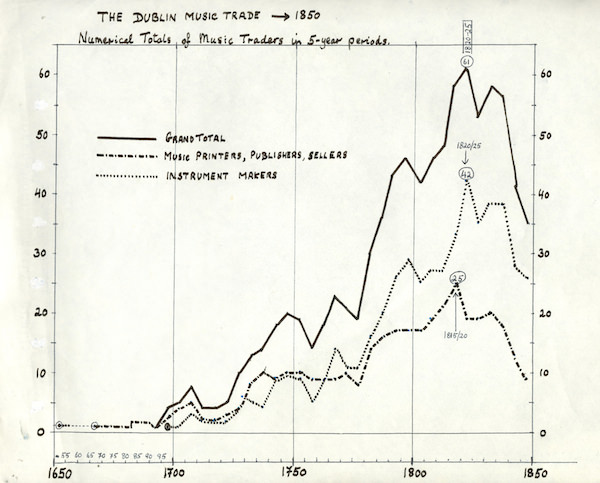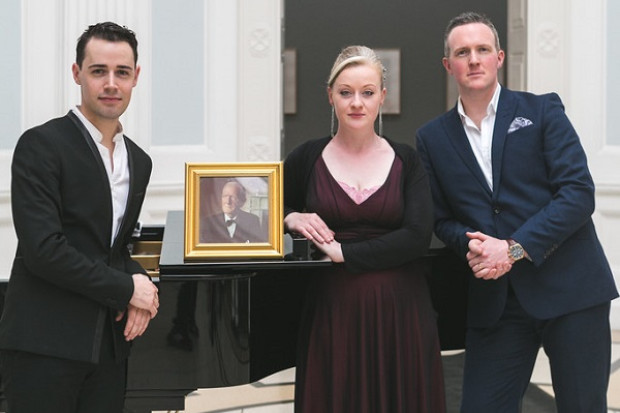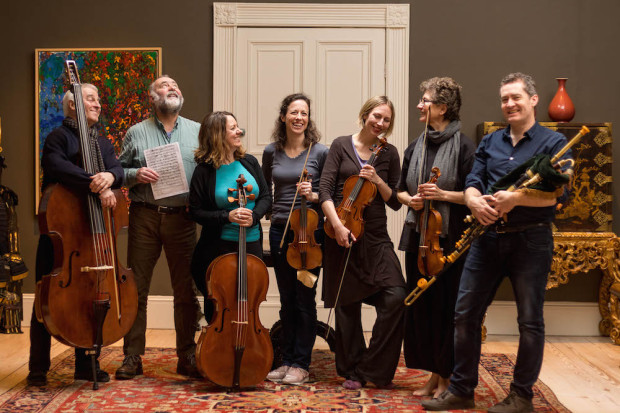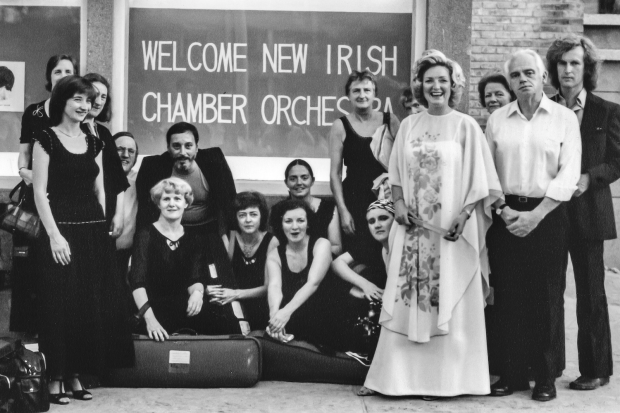
A graph by Brian Boydell showing music trade in Dublin.
Documenting Music Trade in Dublin in the Eighteenth and Nineteenth Centuries
The Research Foundation for Music in Ireland has announced the launch of a new website documenting the music trade in Dublin in the eighteenth and nineteenth centuries. The project was initiated by the composer Brian Boydell, who died in 2000 and who authored two books on the period, A Dublin Musical Calendar, 1700–60 and Rotunda Music in Eighteenth-Century Dublin. The research – which initially covered the period 1750 to 1850 – was completed by Boydell’s son Barra Boydell, professor of music at NUI Maynooth, who digitised his father’s card catalogue and expanded the database as far as the end of the nineteenth century.
The research – now published at the website www.dublinmusictrade.ie – covers music publishers, printers, sellers and instrument makers working in Dublin, with the range of coverage stretching primarily from 1515 to 1850. The editors of the website are also inviting contributions to expand the resource, with details about businesses, surviving musical instruments and published music welcome – contact Dr Catherine Ferris (catherine.ferris [at] dit.ie) for more information.
According to a graph produced by Brian Boydell in 1972 (above), music trade in Dublin peaked in the 1810s and 1820s, with twenty-five music printers/publishers/sellers and over forty instrument makers active in the city. This figure declined towards the middle of the century, according to the information available, with fewer than ten instrument makers working by 1850.
The website can be searched by name, date, street address and business type and Brian Boydell’s original card catalogue can also be browsed in image form. Some cautionary notes are provided including a remark that some people described themselves as instrument makers when they didn’t actually make the instruments themselves, but purchased them and added their own maker’s stamp.













